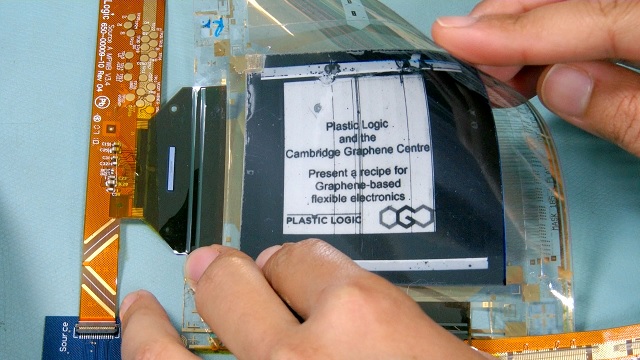 Active matrix electrophoretic display incorporating graphene.
Active matrix electrophoretic display incorporating graphene.
The prototype was created by combining Plastic Logic’s display and transistor processing methods for flexible devices and the expertise of Cambridge Graphene Centre researchers on graphene.
Graphene is a lightweight two-dimensional material that consists of a layer of carbon atoms. The new product is an active matrix electrophoretic display, which is similar to the technology used e-readers but is made of flexible plastic rather than glass. The pixel electronics of the display includes a solution-processed graphene electrode rather than the sputtered metal electrode layer used in conventional devices.
In contrast to conventional ceramic materials such as indium-tin oxide, graphene is more flexible. The ultra-flexible characteristic of the graphene layer allows the wider implementation of graphene, particularly in foldable electronics. Organic Thin Film Transistor (OTFT) technology from Plastic Logic is used to design the backplane (or pixel electronics) that measure 150 pixel per inch, at temperatures less than 100°C.
The backplane design was completed by depositing a graphene electrode before the device was patterned with the micron-scale features. In addition, the backplane structure is integrated with an electrophoretic imaging film in order to develop a tough display and ultra-low power.
Future work may include improving the video functionality and colour of the display with the introduction of organic light emitting diodes and liquid crystal technology. Cambridge Graphene Centre Director, Professor Andrea Ferrari, stated that the evolution of the graphene-based electrophoretic display opens up the potential for flexible and fully wearable electronics.